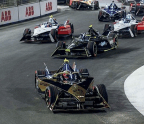Schools of thought
With concepts ranging from single-cylinder combustion cars to 4WD electric drivetrains, this year’s Formula Student UK (FSUK) and Formula Student Germany (FSG) events were once again great adverts for the ability and ingenuity of student engineers, and there was very much of interest on show at both Silverstone and Hockenheim.

Starting with the suspension, in general the overall design approach to this across the paddock has more or less converged to a common format. Springs and dampers are positioned inboard of the wheels and the chassis is actuated via pushrod and bell-crank assemblies. This year’s UCL car, however, featured an innovative and novel approach to suspension design in the form of flexures. In the context of control arms, flexures are an alternative mounting technology to the traditional spherical bearing configuration. Traditionally, control arms are fastened to the chassis via bolts in double-shear with articulation to allow for wheel displacement provided by spherical bearings. The idea of a flexure is that the control arm is mounted to the chassis without a spherical bearing and instead uses a flexible section of material bonded and fastened to the arm. The benefits of this arrangement include reduced weight and friction in wheel articulation, as well as a finer control of kinematic and compliance effects within the system.
Flexible approach
It was at first a little surprising to see flexures on a Formula Student car due to the fairly large wheel travel requirement (a combined 50mm of bump and droop), whilst the control arms are relatively short so there is a typically large range of angle required for wheel articulation.
‘The entire approach to this FS car was towards mechanical grip rather than that of aerodynamic grip,’ says Pete Weston, who played a key role in the development of this feature. ‘With the suspension we saw the opportunity to try something a little different and so have used flexures on the control arms.
You’re reading a preview, subscribe to read more.
Start your free 30 days





